Handling Harsh Feedback in Sprint Reviews
Learn how Agile teams can handle harsh Sprint Review feedback by analysing root causes, engaging stakeholders, and deciding whether to halt, pivot, or …
Deliver valuable, usable products through iterative learning, customer feedback, and continuous improvement. Align strategy, discovery, and delivery to maximise outcomes and reduce risk.


Product Development is the systematic process of delivering valuable and usable products through iterative learning, customer feedback, and continuous improvement. It encompasses the alignment of strategy, discovery, and delivery to maximise outcomes while minimising risk. This concept is crucial as it enables teams to respond effectively to changing market demands and customer needs, fostering an environment where innovation can thrive.
By integrating practices from Agile, Lean, and DevOps, Product Development promotes a culture of collaboration and transparency, allowing cross-functional teams to work cohesively towards shared goals. It emphasises the importance of understanding customer feedback loops, which inform product iterations and enhancements, ensuring that the end product not only meets but exceeds user expectations.
The long-term, systemic nature of Product Development means that it is not merely about delivering a product but about creating a sustainable framework for ongoing value delivery. This approach encourages teams to embrace experimentation and learning, leading to improved efficiency and effectiveness in product delivery. By focusing on continuous improvement and adaptability, organisations can cultivate resilience and maintain a competitive edge in an ever-evolving landscape. The emphasis on value delivery ensures that every effort contributes meaningfully to the organisation’s strategic objectives, reinforcing the importance of a well-defined Product Development process in achieving long-term success.
Learn how Agile teams can handle harsh Sprint Review feedback by analysing root causes, engaging stakeholders, and deciding whether to halt, pivot, or …
Explains why the Product Owner should lead Sprint Reviews in Agile, detailing their role in maximising value, gathering feedback, and updating the …
Learn practical strategies to boost stakeholder attendance and engagement in Sprint reviews, encouraging valuable feedback and stronger collaboration …
Explains how the Sprint Goal serves as an immediate tactical objective in Scrum, guiding teams toward strategic Product Goals and maximising value …
Master estimation in Agile and Scrum. Improve forecasting, manage uncertainty, and align expectations using empirical data and collaborative …
Learn how Kanban boosts transparency in software engineering, helping teams visualise workflows, identify bottlenecks, and drive continuous …
Ensuring every team member understands and connects their daily work to the product vision and strategic goals is key to true Agile alignment, …
The most important aspect of Scrum is empiricism, using transparency, inspection, and adaptation to navigate complexity and drive effective product …
Explains how identifying and validating unrealised value, understanding user needs, and rapid feedback loops can enhance product development and …
Explains Scrum’s core values, roles, artifacts, and events, highlighting how they support teamwork, transparency, and adaptability in managing complex …
Inspecting and adapting the increment to ensure transparency and stakeholder feedback.
Learn how to track, manage, and optimise product development costs by empowering teams with financial awareness, key metrics, and continuous …
Explains how close collaboration between product management and product development in agile teams drives market value, innovation, and continuous …
Immersive learning helps aspiring agile leaders overcome cultural barriers by providing time, practical experiments, and peer feedback to drive real …
Explores how to maintain a lean, transparent product backlog that balances current needs with future readiness, enabling teams to adapt and maximise …
Explores how Agile teams can avoid overloading backlogs, Sprints, and products by focusing on prioritisation, value delivery, and lean, effective …
Explains the risks of using say-do metrics in Agile, highlighting how they encourage vanity metrics, harm psychological safety, and shift focus from …
Explains how agile practices help teams manage complexity, adapt to change, and deliver value faster in modern product development, compared to …
Learn to plan, track, and manage agile software projects using Azure Boards, including backlog refinement, sprint planning, and team collaboration in …
Explores how lack of stakeholder feedback in Agile harms team morale and alignment, and offers practical ways to boost engagement and maintain …
Learn how Scrum teams can boost Sprint review success by engaging stakeholders, tailoring communication, and focusing on value, transparency, and …
Explains how Scrum Teams can use Kanban practices to optimise workflow, track flow metrics, and enhance transparency, efficiency, and continuous …
Outlines core Agile values and principles for software development, emphasising collaboration, adaptability, working software, customer focus, and …
Learn how to turn scope creep into an advantage by adopting Agile methods, focusing on value delivery, and adapting to changing requirements in …
Explains why Agile is not about speed but about prioritising valuable work, adapting to feedback, and avoiding wasted effort to deliver products that …
Explains why effective planning is essential in Agile and Scrum, debunking myths about planning, and highlights strategies for teams of all sizes to …
Explores how rigid hierarchies in product backlogs can hinder agility, advocating for flatter, value-focused approaches to manage complexity in …
The PSU course bridges the gap in product development by integrating user experience and design into Scrum, enabling teams to deliver more valuable, …
Explores the vital role of product ownership in agile teams, highlighting key skills, challenges, and strategies for effective product management and …
Explores what traditional organisations must change, beyond adopting Agile tools, to achieve true agility, cultural transformation, and sustained …
Explains how product goals serve as intermediate strategic goals, guiding agile organisations through uncertainty using experimentation, outcomes, and …
Explains the key accountabilities, skills, and behaviours required for a Scrum Product Owner, including hiring trends, role requirements, and …
Learn how structured learning in product development boosts user value, reduces waste, fosters collaboration, and encourages creativity through …
Gain practical skills in managing Product Backlogs, engaging stakeholders, and using data to align backlog items with product vision in Scrum …
Explains how a well-ordered, refined Product Backlog guides Agile teams, supports goal alignment, and ensures value-driven product development through …
Explores how immersive, hands-on learning in Scrum boosts knowledge retention, practical skills, and continuous improvement compared to traditional …
Learn how to align teams, stakeholders, and processes for effective agile product management by fostering shared goals, clear communication, and …
Explains how empiricism, continuous observation, inspection, and adaptation, drives Agile success by enabling teams to respond effectively to real …
Running an Applying Professional Scrum workshop helps organisations build agile skills, improve teamwork, and adopt Scrum practices through hands-on, …
Explains how Product Owners can replace traditional project management with vision, value, and validation to guide teams, deliver real value, and …
Explains how adopting a shift-left approach in software development improves quality, speeds up delivery, reduces costs, and fosters collaboration by …
Learn how to customise Azure DevOps to support Scrum teams, manage backlogs, plan sprints, and improve agile workflows with practical setup and …
Explains how using a flat backlog structure, rather than a hierarchy, improves agility, prioritisation, and value delivery in Scrum and Kanban teams.
Learn how Agile teams collaboratively select high-value sprint backlog items by balancing business needs, technical priorities, and stakeholder input …
Explains how Product Owners can use effective prioritisation to maximise value, manage budgets, and build accountability through clear communication …
Learn practical skills in product validation, customer discovery, and team collaboration to create customer-focused products, guided by an expert …
Explains the pitfalls of micromanagement in Agile, showing Product Owners how to avoid "Agile Banditry" by focusing on vision, value, and empowering …
Learn how to identify and challenge assumptions in product development, avoid the feature factory trap, and use discovery, experimentation, and …
Explores when consensus helps or hinders product development, highlighting the need to balance collaboration, leadership, trust, and timely …
Explores the full responsibilities of a Product Owner in Agile, highlighting strategic decision-making, value maximisation, and the importance of …
Learn how to define, craft, and achieve effective Sprint Goals in Scrum, using frameworks like SMART and OKR to align teams, deliver value, and …
Step-by-step guide to effective Sprint Planning in Scrum, covering goal setting, backlog selection, team capacity, actionable plans, and clear …
Limiting work in progress in Kanban helps teams focus, spot bottlenecks, maintain quality, and deliver value efficiently by ensuring a sustainable, …
Explains why effective product backlog management is vital in Agile, highlights common pitfalls, and offers practical tips to improve team focus, …
Explains how effective Product Owners shape product strategy using accountability, awareness, acceptance, access, and adaptability, not just backlog …
Explores how product owners balance innovation, customer needs, and team collaboration, with insights on hypothesis-driven engineering and effective …
Explores how questioning, continuous improvement, and team empowerment drive Agile success, helping organisations adapt quickly, spot inefficiencies, …
Learn how to identify, prioritise, and test assumptions in product development using hypothesis-driven methods, experimentation, and critical analysis …
Learn practical skills for effective product backlog management, including item creation, prioritisation, breakdown, and alignment with business goals …
Explores how lean product development improves decision-making, reduces risk, and increases value by focusing on customer needs and efficient product …
We partner with businesses across diverse industries, including finance, insurance, healthcare, pharmaceuticals, technology, engineering, transportation, hospitality, entertainment, legal, government, and military sectors.

Teleplan

Sage

Cognizant Microsoft Business Group (MBG)

Boeing

Big Data for Humans

Freadom

YearUp.org

Xceptor - Process and Data Automation

Slaughter and May

Higher Education Statistics Agency

New Signature

MacDonald Humfrey (Automation) Ltd.

Bistech

Illumina

Jack Links

Alignment Healthcare

Workday
CR2

Department of Work and Pensions (UK)

Ghana Police Service

Royal Air Force

Nottingham County Council

Washington Department of Enterprise Services

New Hampshire Supreme Court

Trayport

Flowmaster (a Mentor Graphics Company)

Slaughter and May

Brandes Investment Partners L.P.

Big Data for Humans

Teleplan